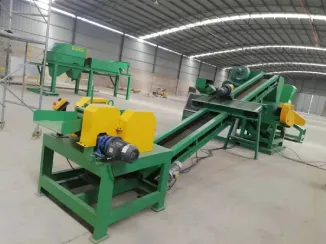

11月 . 01, 2024 01:34 Back to list
Introduction to Metal Shredder Factories Revolutionizing Waste Management
In the modern world, effective waste management is becoming increasingly crucial due to the rising concerns about environmental sustainability and resource conservation. One pivotal component that has emerged in this sector is the metal shredder factory. These facilities are designed specifically to process and recycle scrap metals, an essential practice that not only helps in reducing landfill waste but also recovers valuable materials that can be reused in manufacturing.
The Importance of Metal Shredders
Metal shredders are heavy-duty machines that are capable of breaking down large, cumbersome pieces of metal into smaller, more manageable fragments. This process not only facilitates easier handling and transportation but also prepares the metal for recycling or repurposing. Recycled metals have a lower environmental impact than virgin materials, as they require less energy to process and contribute to the conservation of natural resources. Factories that specialize in metal shredding play a vital role in this recycling ecosystem, ensuring that metals from old vehicles, appliances, and industrial equipment are effectively processed.
Processes Involved in Metal Shredding
The operation of a metal shredder factory revolves around several key processes
1. Collection and Sorting Scrap metals are collected from various sources, including construction sites, automotive yards, and electronic waste. At the factory, these materials are sorted based on their type and composition, as different metals require different processing techniques.

2. Shredding Once sorted, the metals are fed into powerful shredders equipped with sharp blades that can handle even the toughest materials. This phase reduces large pieces into smaller shreds, making transportation and further processing easier.
3. Separation After shredding, the materials undergo separation processes. Magnetic separators are typically employed to remove ferrous metals (like iron) from non-ferrous materials (like aluminum and copper). This ensures that the output is clean and ready for the next phase of recycling.
4. Baling The separated metal shreds are then compacted into bales which are easier to handle, store, and transport. This final product can be sold to various recyclers who will further process the materials for production.
Environmental Impact and Sustainability
Metal shredder factories contribute significantly to sustainability efforts. By promoting the recycling of metals, they help reduce the need for mining new materials, which can be an environmentally detrimental process. The energy savings from recycling metals can be substantial, as producing new aluminum from recycled material uses about 95% less energy than creating it from raw ore. This reduction in energy consumption translates to fewer greenhouse gas emissions, further mitigating climate change impacts.
Conclusion
In conclusion, metal shredder factories are an essential part of the recycling landscape, enabling effective waste management and resource recovery. By transforming scrap metal into recyclable materials, these facilities not only support environmental sustainability but also contribute to the circular economy. As the world continues to grapple with waste generation and resource scarcity, the importance of metal shredding and recycling will only become more pronounced, making these factories crucial players in building a more sustainable future.
Latest news
Troubleshooting Common Eddy Separator Problems
NewsJul.04,2025
The Role of Metal Recycling Plants in Circular Economy
NewsJul.04,2025
The Impact of Recycling Line Pickers on Waste Management Costs
NewsJul.04,2025
Safety Features Every Metal Shredder Should Have
NewsJul.04,2025
How Industrial Shredders Improve Waste Management Systems
NewsJul.04,2025
How Cable Granulators Contribute to Sustainable Recycling
NewsJul.04,2025